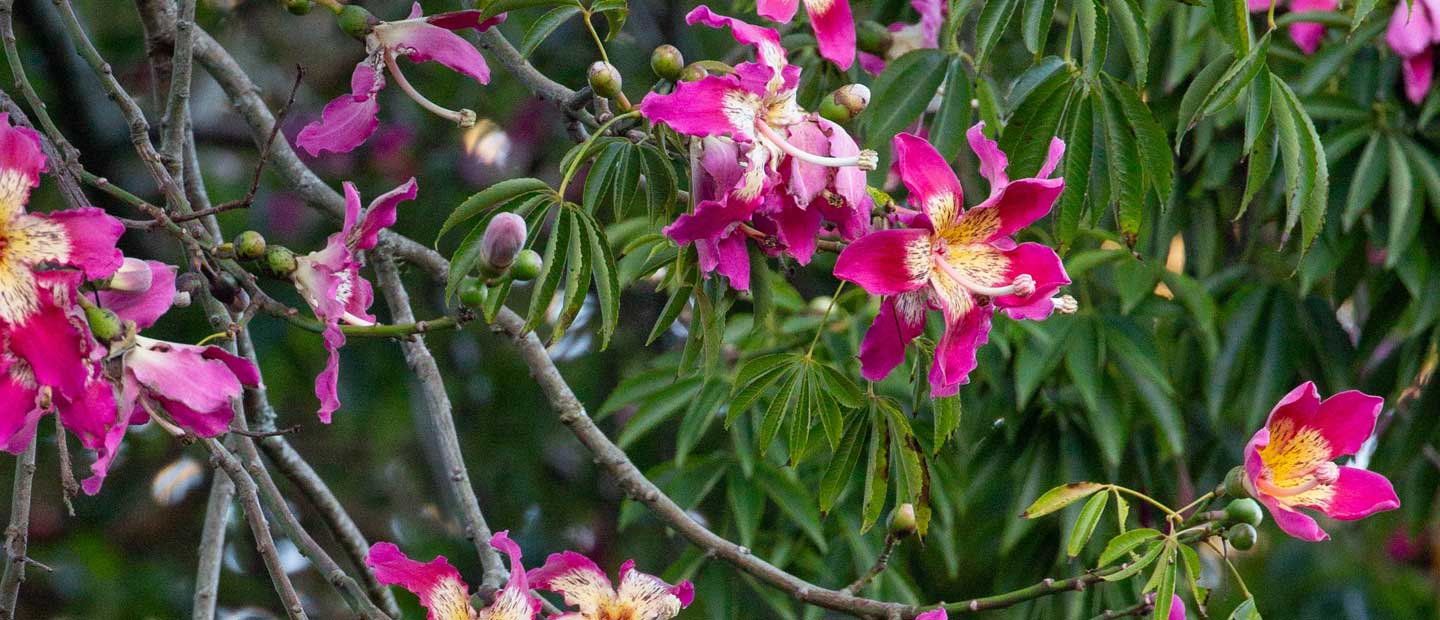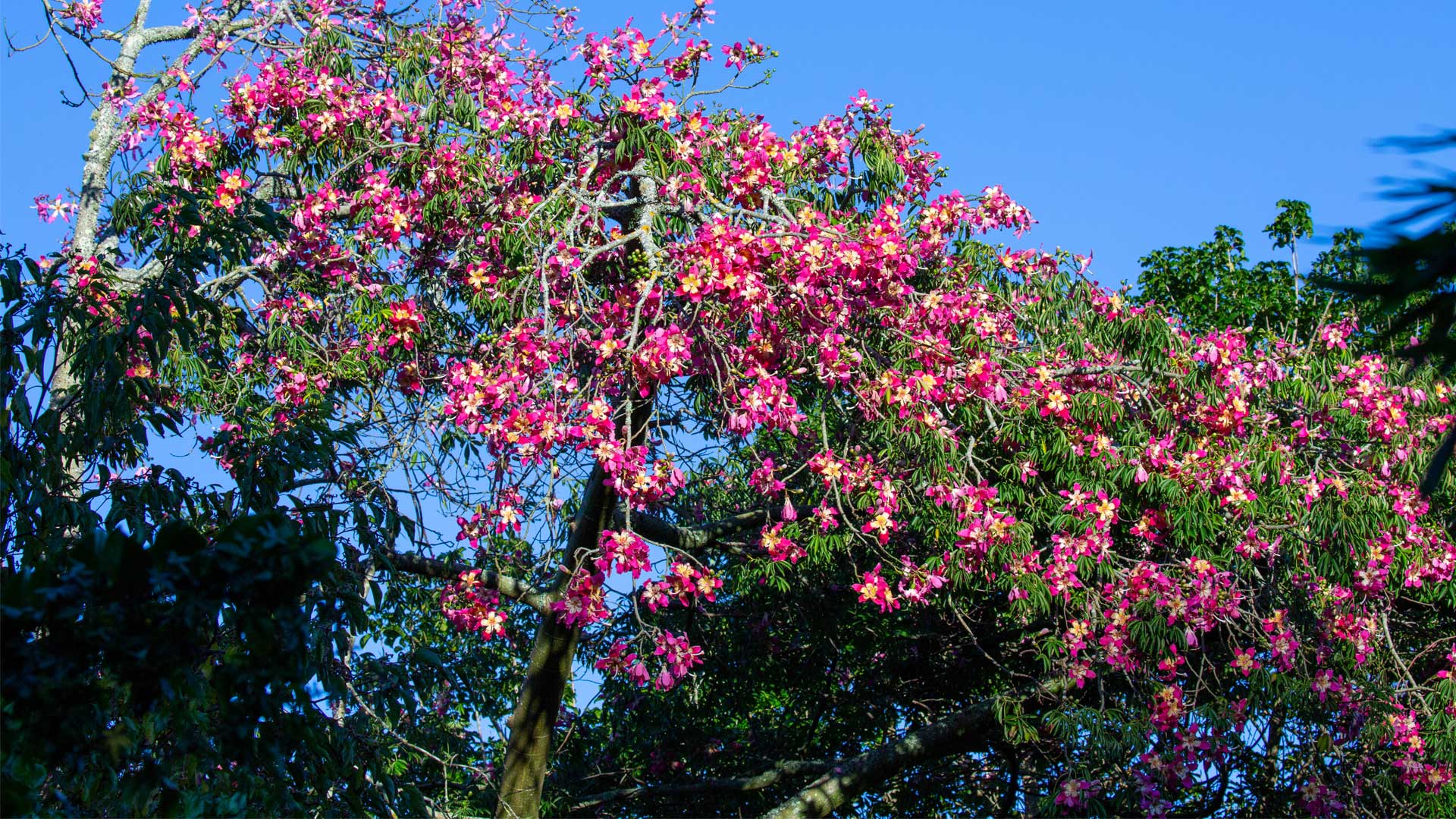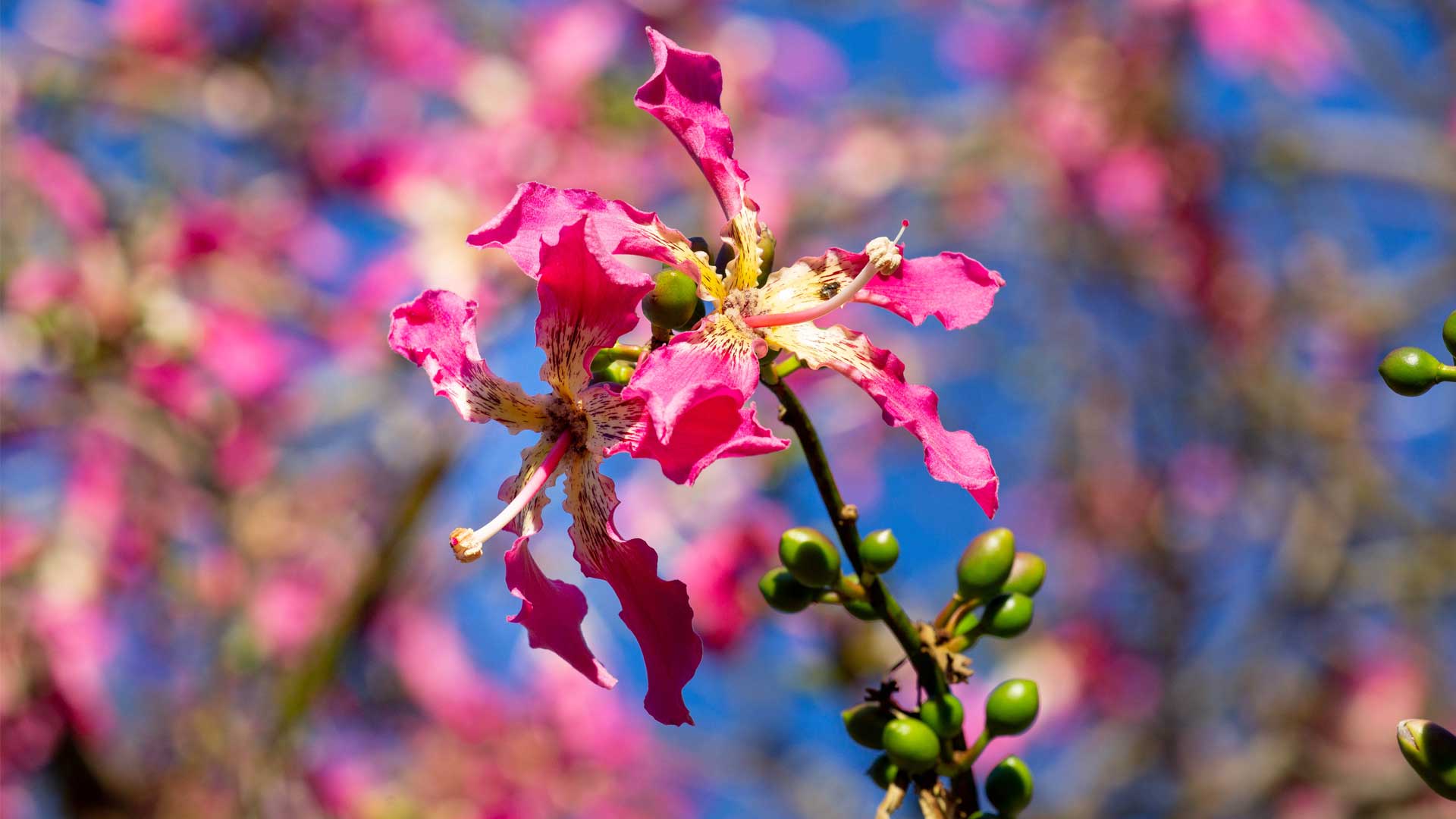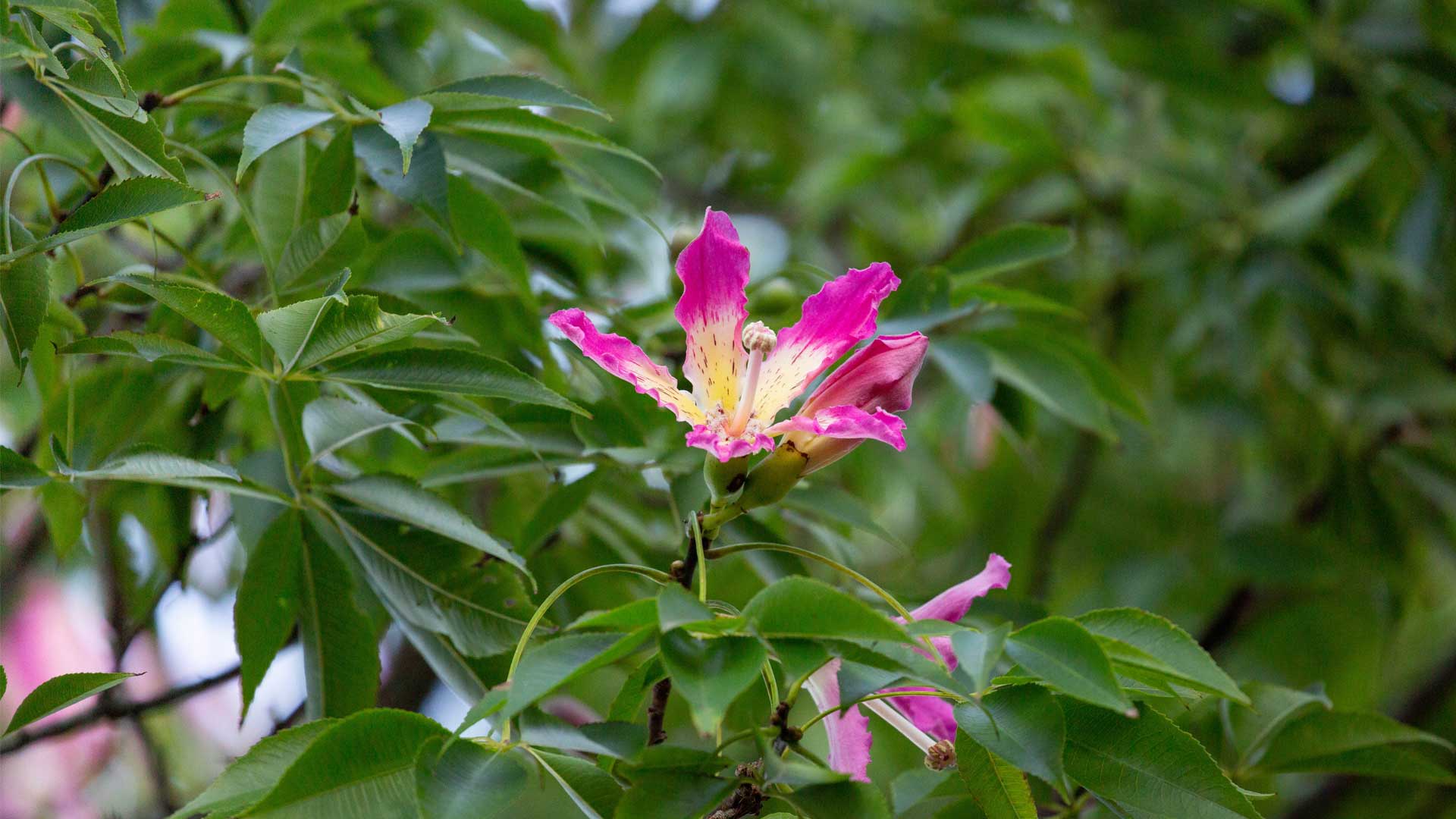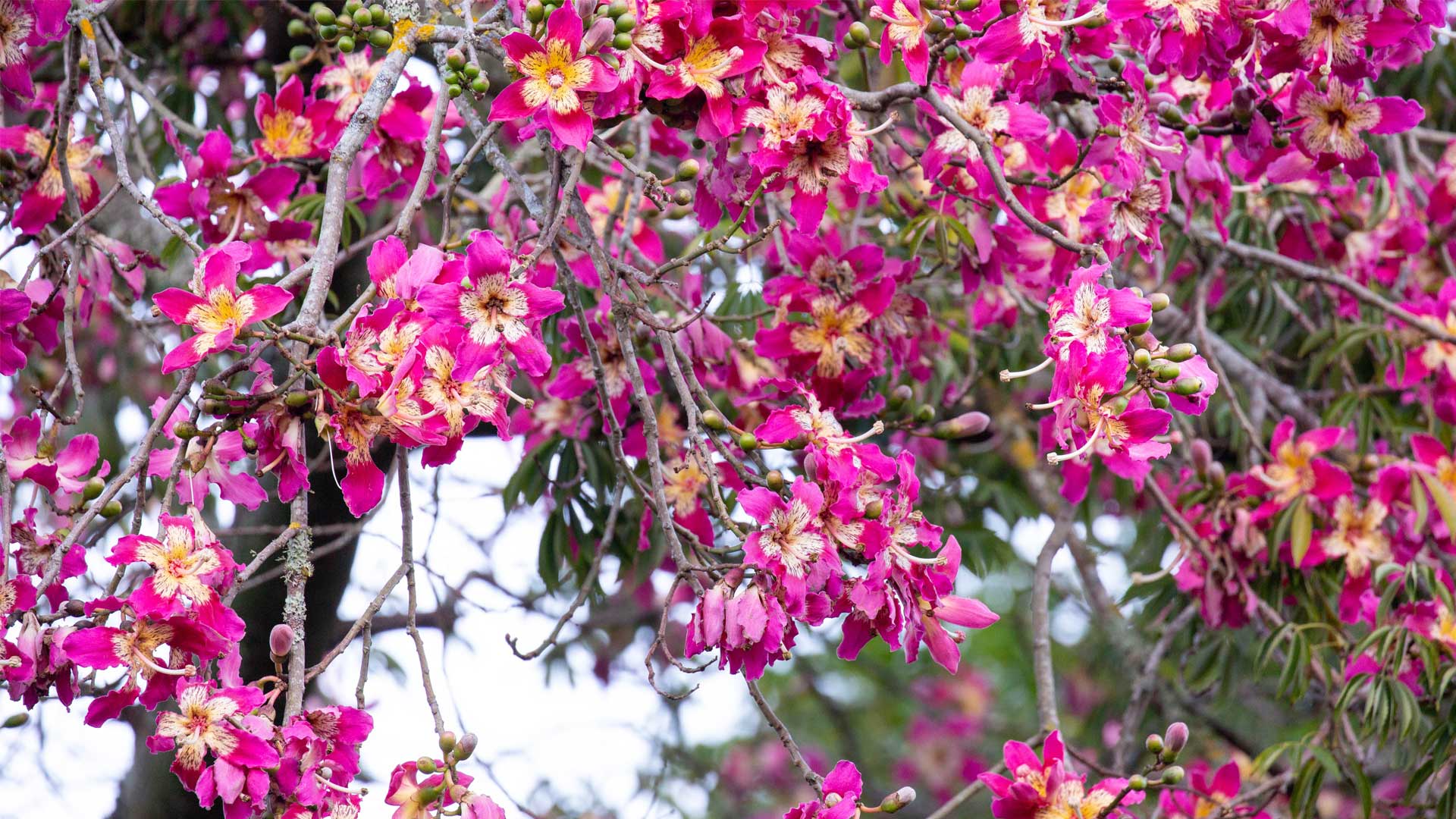Young trees start their life with green trunks and limbs due to their high chlorophyll content, allowing the tree to photosynthesise before leaves have been produced. Some trees may not flower until they are 20 years old!
The silk floss tree is part of the Malvaceae family and is closely related to the baobabs or ‘bottle tree’ which is known for its water-storing girth and can reach up to 11 meters in diameter.
There is a sad folk tale surrounding the silk floss tree which the Bolivians call toborochi, meaning ‘tree of refuge’. Legend has it that the tree holds the spirit of a beautiful and pregnant goddess Aravera who took refuge in the tree to give birth to her son. While inside the trunk, she was kidnapped by evil spirits who were afraid that her unborn child would grow up to punish them for their bad deeds. Fortunately her son survived but the tree goddess remained inside and her shape can be seen in the bulge of the tree’s trunk as it matures and in the pink flowers that form every year.
A stunning ornamental tree, this deciduous beauty is a great shade tree in summer, but you will have to wait a few years before an impressive flower covering is produced.
Admire our beautiful silk floss tree while it’s in full bloom! With plenty of buds it will be flowering for some time. You can see this impressive specimen in the gardens surrounding our alligator boardwalk in our South American precinct and as you pass the band rotunda lawn their bright pink flowers stand out in the canopy ahead.
Stay tuned for the next blog in this series and if you have any recommendations on plants we should cover or questions for our horticulture experts, flick us an email!


